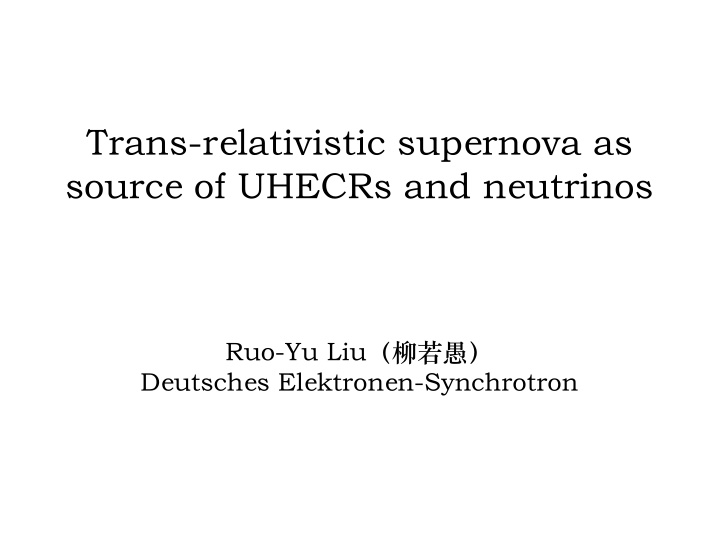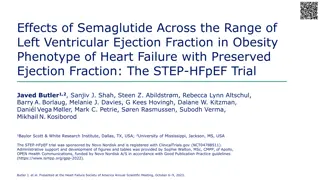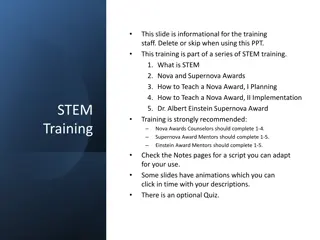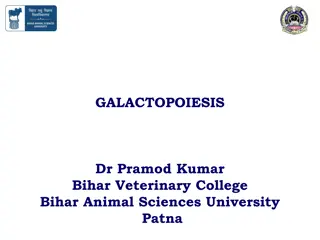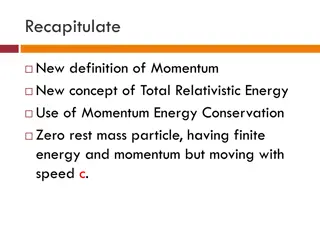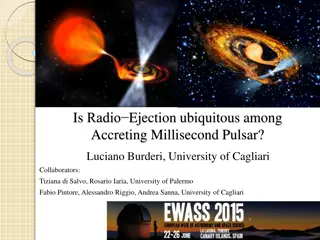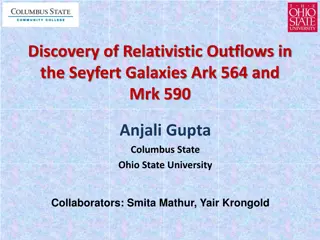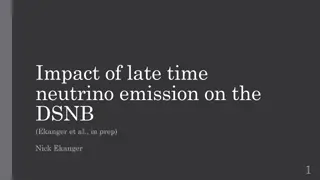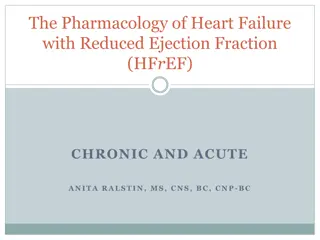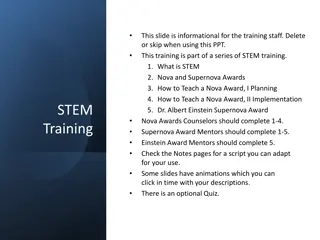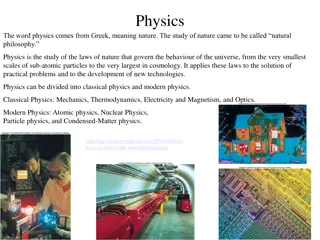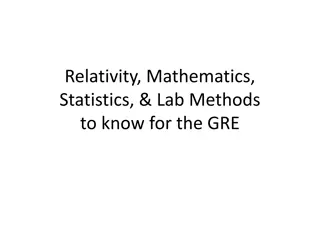Trans-Relativistic Supernova: Peculiar Energy Ejection Phenomenon
A peculiar type of supernova, characterized by a large fraction of energy in high-velocity ejecta with semi-relativistic features. Such supernovae, like SN 1998bw, are associated with low-luminosity gamma-ray bursts (GRBs) and highly-magnetized black holes. Not every trans-relativistic supernova is linked to a GRB, and the duration of accretion plays a role in the detection of associated phenomena.
Download Presentation

Please find below an Image/Link to download the presentation.
The content on the website is provided AS IS for your information and personal use only. It may not be sold, licensed, or shared on other websites without obtaining consent from the author.If you encounter any issues during the download, it is possible that the publisher has removed the file from their server.
You are allowed to download the files provided on this website for personal or commercial use, subject to the condition that they are used lawfully. All files are the property of their respective owners.
The content on the website is provided AS IS for your information and personal use only. It may not be sold, licensed, or shared on other websites without obtaining consent from the author.
E N D
Presentation Transcript
Trans-relativistic supernova as source of UHECRs and neutrinos Ruo-Yu Liu Deutsches Elektronen-Synchrotron
What is it? What is it? A peculiar type of supernova A peculiar type of supernova Large fraction of energy in high-velocity (mildly-relativistic, ~1) ejecta It has different names: It has different names: Broadline type-Ic supernova Spectral feature semi-relativistic hypernova larger explosion energy engine-driven supernova Driven mechanism
First discovered semi-relativistic hypernova, SN 1998bw 38Mpc away from us
SN 1998bw is associated with a low-luminosity GRB (GRB 980425) Highly-magnetized, fast- rotating blackhole: Drive Jet+wind via accretion Not every TRSN is associated with a GRB Not every TRSN is associated with a GRB Long accretion duration: jet can penetrate ejecta associated with LGRB Short accretion duration: jet cannot penetrate ejecta no GRB Viewing angle may also lead to nondetection of GRB
Some famous trans Some famous trans- -relativistic supernovae relativistic supernovae Name Name Kinetic energy Kinetic energy Luminosity Luminosity Distance Distance comments comments SN1998bw SN1998bw 5e52erg 5e52erg 38 Mpc 38 Mpc GRB980425 GRB980425 SN2006aj SN2006aj 2e51erg 2e51erg 120 Mpc 120 Mpc GRB060218 GRB060218 SN 2010bh SN 2010bh 1e52erg 1e52erg 260 Mpc 260 Mpc GRB100316D GRB100316D SN 2016jca SN 2016jca 5e52erg 5e52erg 700Mpc 700Mpc GRB161219B GRB161219B SN2009bb SN2009bb 2e52erg 2e52erg 40 Mpc 40 Mpc No GRB No GRB associated associated
Mildly-relativistic shock can acceleration UHECRs Wang et al. 2007 Soderberg et al. 2006 Also see Ellision et al. 2013
Progenitor: Wolf-Rayet Star WR124 (Credit: NASA) Hydrogen Envelope has lost Due to strong wind or stripped by companion star (no hydrogen line observed in the supernova explosion) Before explosion, stellar wind contain light and intermeidate-mass nuclei (He, C, O) Supernova ejecta also contain lots of metal elements produced during explosive nucleosynthesis Nakamura et al. 2001 A model that can well explain the lightcurve of SN 1998bw
Survival of UHE nuclei in TRSNe - phodisintegration (Using properties of SN 1998bw as reference) Transparent after 100days of Hypernova explosion Wang et al. 2008
Survival of nuclei in associated GRB jet due to photodisintegration by GRB prompt emission, nuclei spallation Horiuchi et al. 2012 Wang et al. 2008
Energy budget Energy budget Ek~1052erg in mildly relativistic ejecta Local rate R0~200-1000 Gpc-3yr-1 Wk~Ek*R0~1046ergMpc-3yr-1 (Local SNe rate: 105Gpc-3yr-1) 1045.5ergMpc-3yr-1 1044.5ergMpc-3yr-1
UHECRs from TRSNe can explain the observation Liu & Wang 2012
Historical TRSN in Milky Way for 1015eV-1018eV (Budnik et al. 2008) Galactic event rate be larger than one event per confinement time RTRS=(0.1-1)%RSN Kinetic energy in mildly-relativistic ejecta
Augers measurement on the composition of UHECRs Large-scale anisotropy: Dipolar component Possible contribution from GP300 origin of intermediate-mass nuclei at sub-ankle Constraint on the properties of local magnetic field (D) KASCADE-Grande collaboration 2019
Galactic CRs Galactic CRs 100kpc rg=100pc For E/Z=1017eV B=1 G Liu et al. 2019 Ex Ex- -Galactic CRs Galactic CRs Magnetic horizon for E<E* (Crs trapped by intergalactic magnetic field Diffuse slow and cannot reach Earth within the age of the Universe) Achterberg et al. 1999
Neutrino production inside source (SNR, GRB jet) Neutrino production inside source (SNR, GRB jet) Yu et al. 2008 Murase&Nagataki 2006 Liu et al. 2011 Senno et al. 2016
Neutrino produced in the host galaxy of TRSNe Flux cutoff due to maximum accelerated energy Ep,max~ 4e18eV Ev,max~ 2e17eV Flux break due to fast escape of CRs via diffusion at high energy
Summary Ex-Gal TRSNe may explain UHECRs up to 1020eV, with a consistent spectrum and chemical composition as measured by Auger Gal TRSNe may account for 1015eV-1018eV CRs TeV-PeV neutrinos are expected from TRSNe, but probably cannot extend to UHE that GRAND is interested in GP300 may tell the origin of 1017eV-1018eV CRs by measuring the large-scale anisotropy and constrain properties of local B field
